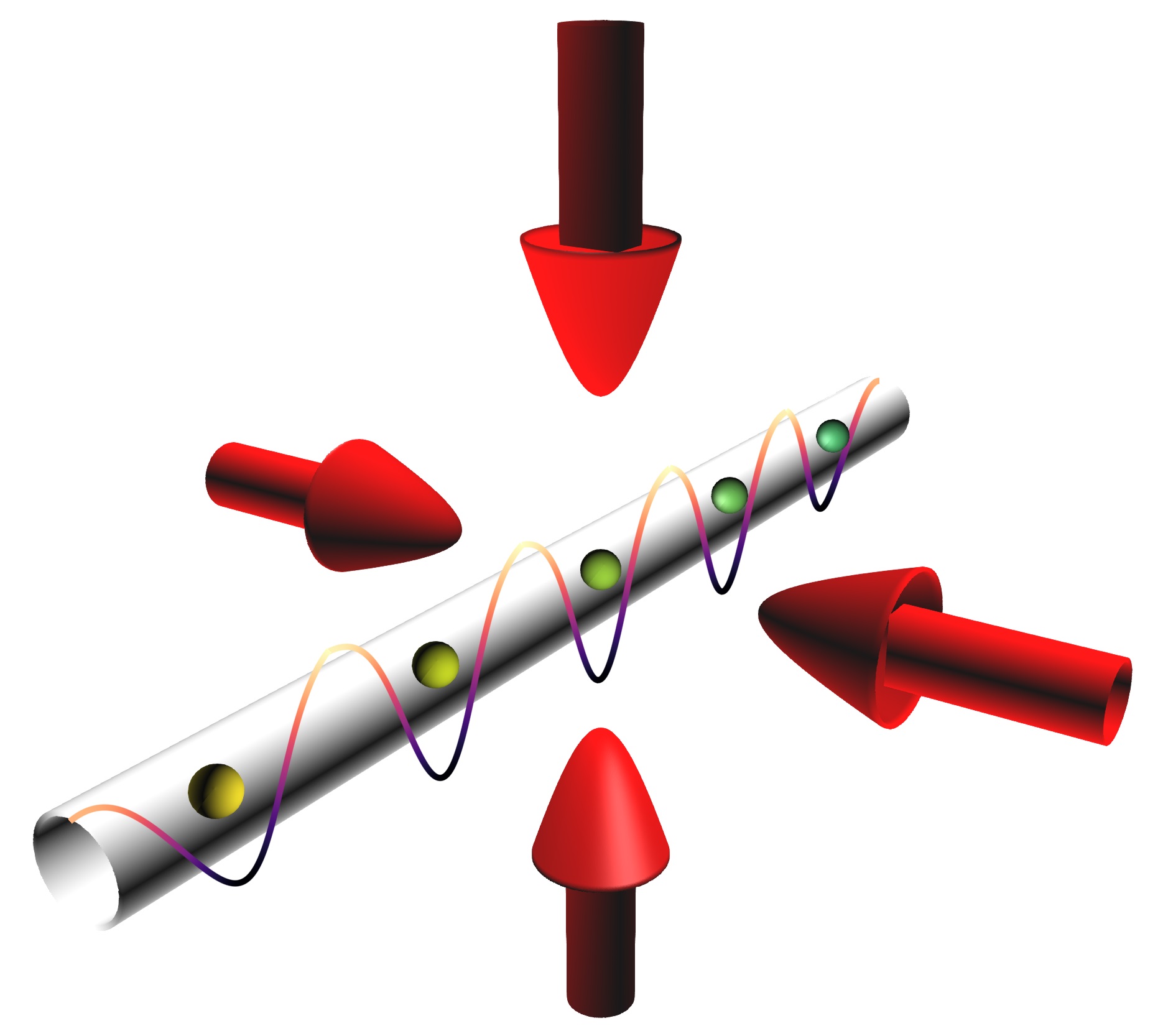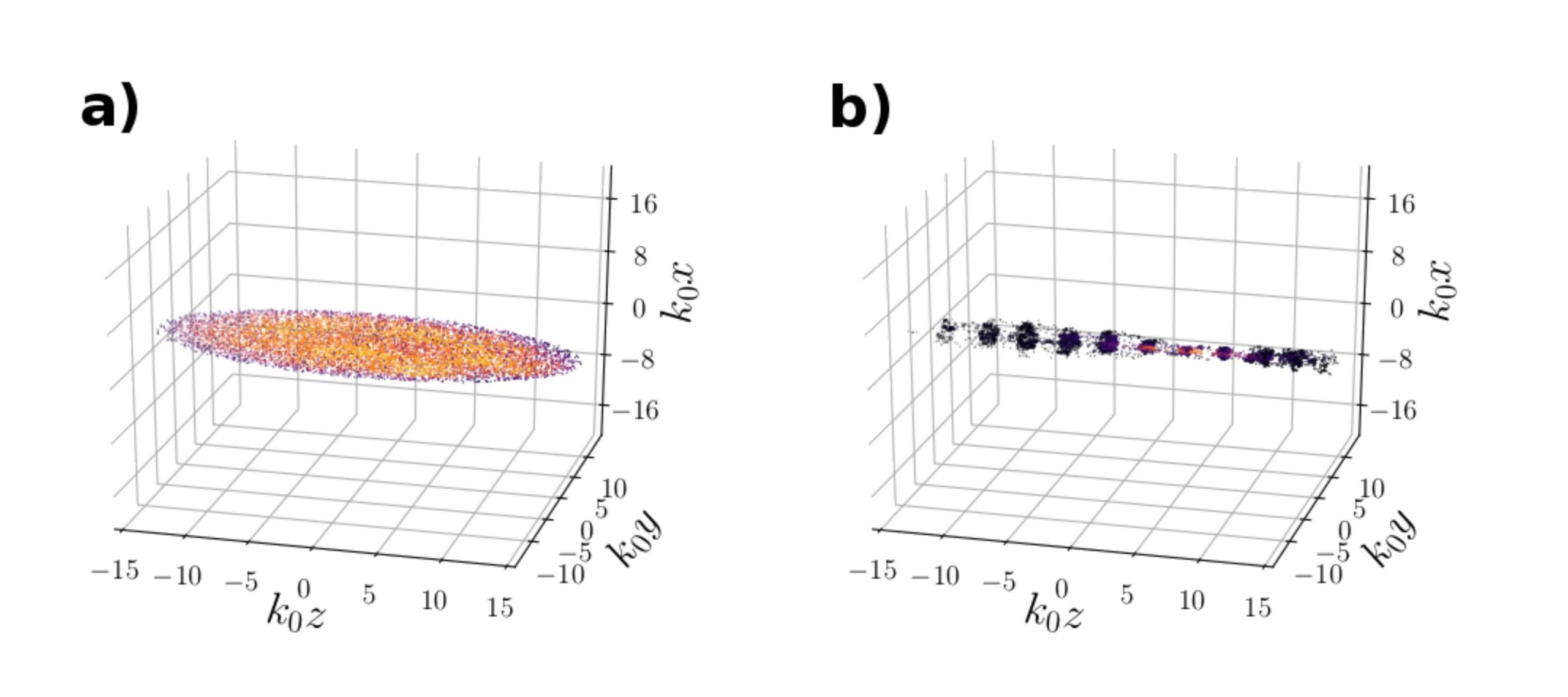Àngel Tarramera Gisbert, Università degli Studi di Milano

Schematic of an Optical Binding (OB) system.
This theoretical project considers collective effects caused by light-matter interaction, tackling two specific cases resulting from collective scattering of light: cooperative cooling and coherent collective emission. On the one hand, the directional backscatter light generated by a cold atomic cloud when lightened with a laser beam is studied. On the other hand, the theory, aid with numerical simulations, to understand how trapping and cooperative cooling arises due to optical binding (OB) in systems of one or two dimensions, is further developed.

Concept of a Collective Atomic Recoil Laser (CARL).
As primary objective, this theoretical project investigates the spatial grating structures emerging in a 3D cold atomic cloud irradiated by a single far-detuned laser beam, also known as collective atomic recoil laser or CARL. The 3D cloud shows a transition from isotropic spontaneous emission to stimulated backscattering. The goal is addressed solving multi-particle motion equations coupled by an optical filed, which is inspected both with a scalar or vectorial model, without and with polarization effects, respectively. New original approaches are used to deal with the dynamics of the system, like molecular dynamic (MD) algorithm.
From the attempt to understand the main goal, a second scope emerged, where the possibility of confining atoms in a 2D plane by using two counter-propagating laser beams (or four beams in a 1D chain) is further refined. Both optical fields generate a standing wave that allows a few atoms to self-organize at distances multiples of the light wavelength. This project exposes evidences that a non-conservative force is generated from a dipole-dipole interaction, allowing the system to cool down when few parameters are tuned accordingly. Therefore, in addition to the motion equations, the internal degree of freedom of the atoms is exploited by treating each atom as an induced dipole. This latter aspect is examined using coupled dipole equations.